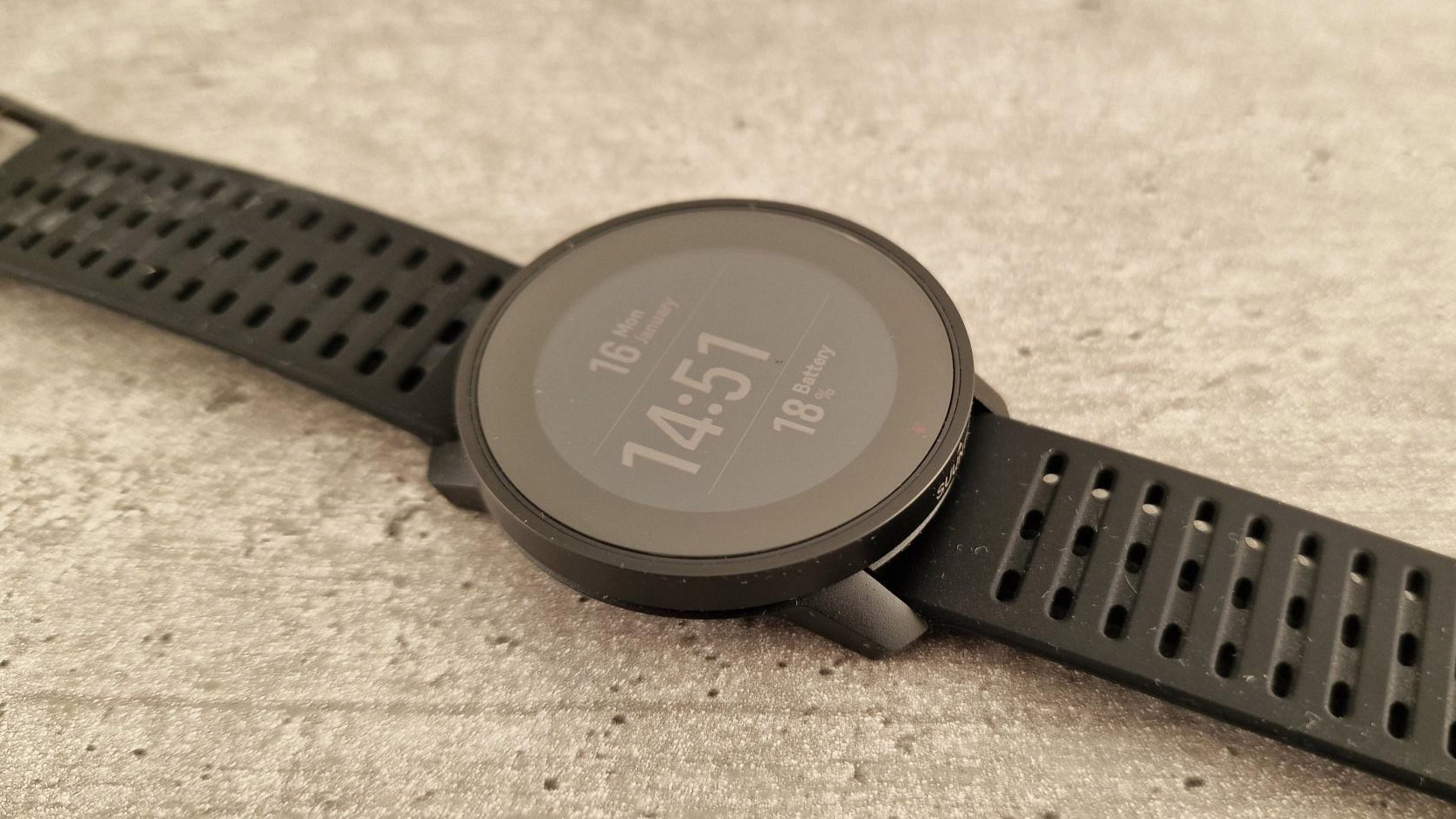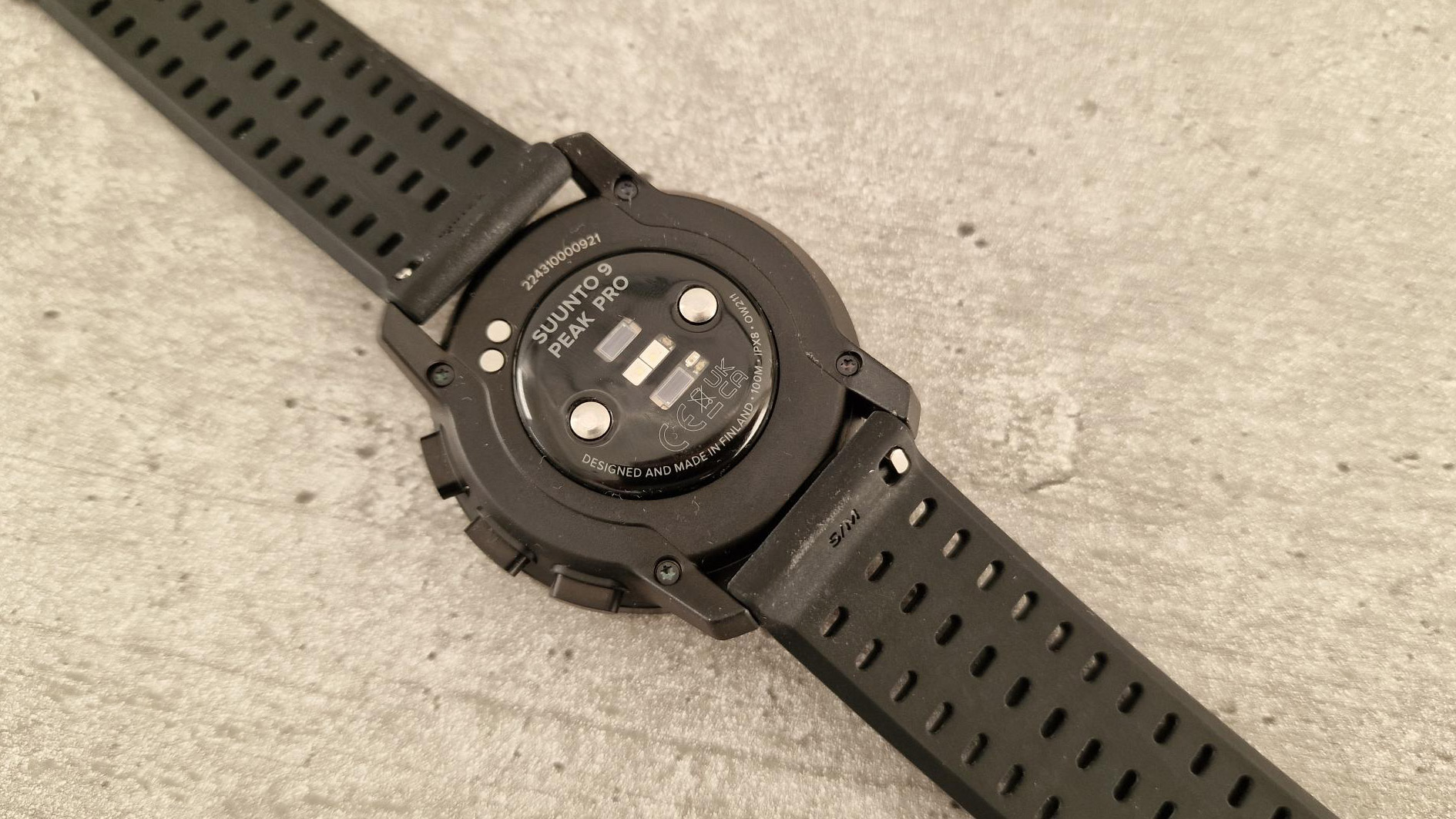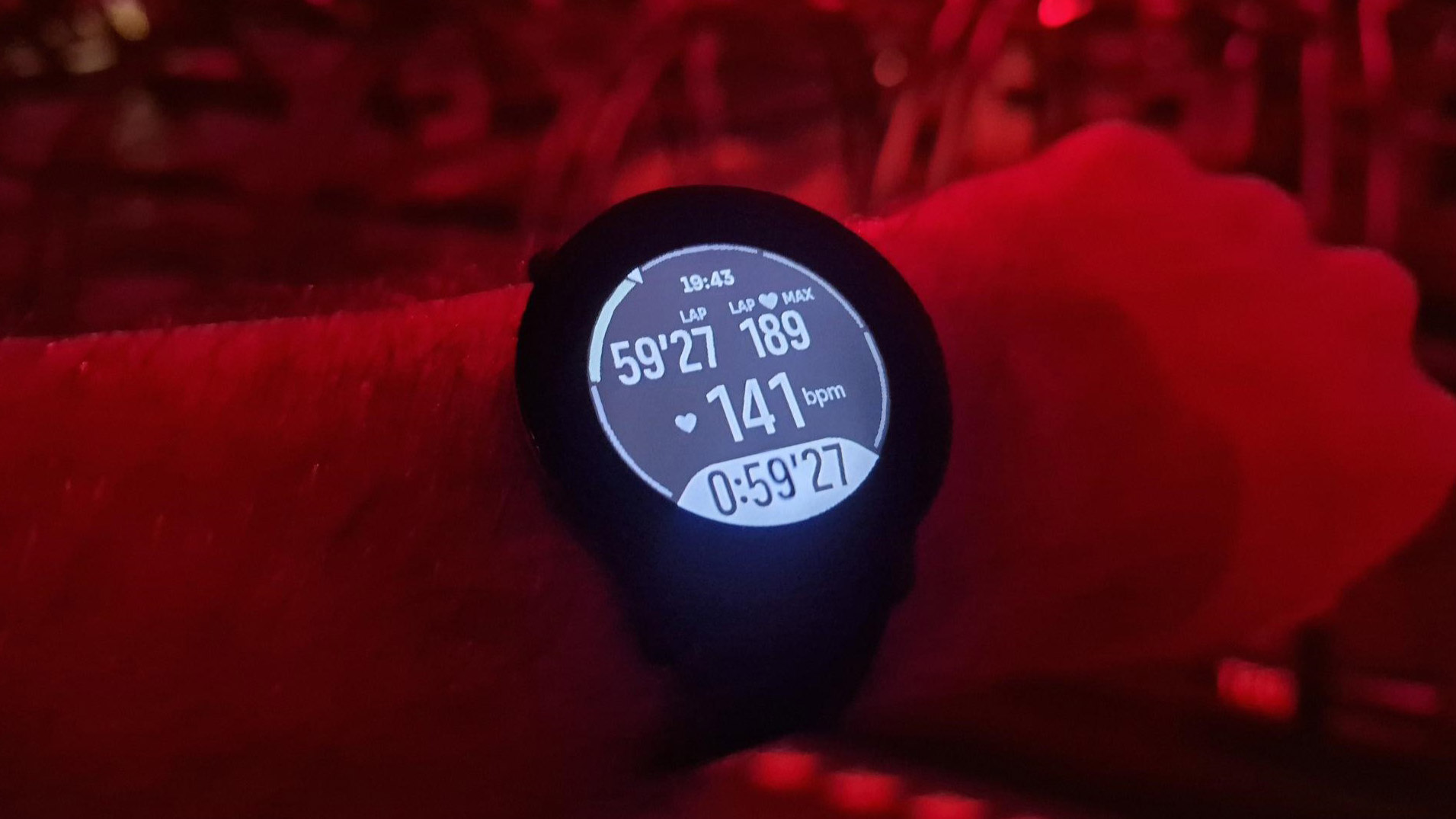Suunto 9 Peak Pro review
The Suunto 9 Peak Pro has been given a powerful upgrade internally when compared to its almost identical-looking predecessor, the Suunto 9 Peak. There’s a new processor, new GPS, new optical heart rate sensor, and way more battery life. In terms of looks, though, not much has changed aside from a slimmer 10.8mm thick chassis and lighter 64g weight.
The biggest drawback here is the fact that Suunto decided not to upgrade the watch’s screen. Measuring 1.2 inches, the monochrome sapphire crystal display has a relatively low 240 x 240 pixel display. While there is an LED backlight, it can sometimes prove difficult to read in some instances as the text isn’t as crisp as you’d expect on a smartwatch - especially one of this price.
On the plus side, the Suunto 9 Peak Pro is super comfortable to wear for longer workouts across all types of activities. It’s also made more sustainably than most other wearables on the market, as it claims to have been built from 100% renewable energy with a 7.5kg CO2e carbon footprint.
When it comes to features, the Suunto 9 Peak Pro is teeming with fitness-tracking tech, boasting 95 trackable activities - from the more popular running, cycling, and swimming to the more obscure, such as snorkeling mode. As you’d expect from a sports watch of this caliber, there’s way more included than activity or step tracking. You’ll also find insightful training tools such as peak training effect, training load, and recovery time recommendations. All of your data is presented clearly in the connected Suunto app, which offers you heaps of post-workout data to sift through ideal for measuring your performance and helping you to track improvements over time. Although it has to be said - the suite of fitness and recovery insights on offer here, while comprehensive, doesn’t live it to those you’ll find on Garmin or Polar devices.
Performance-wise, the Suunto 9 Peak Pro ticks most boxes as a premium activity-tracking smartwatch. Despite a few instances where the interface feels sluggish - especially when you’re asking a lot of it - it can handle commands with ease while providing decent accuracy.
As for battery life, the 9 Peak Pro easily outperforms its predecessor. In our tests, the device lasted just over two weeks before needing a recharge. That was using it to track some kind of workout activity almost every day, sometimes with GPS monitoring enabled and sometimes not, alongside smartphone notifications.
Suunto 9 Peak Pro: Price and availability
- Out now in the UK, US and Australia
- Priced from £419 RRP in the UK, $549 in the US and AU$759 in AUS
- Also comes in a more expensive but lighter titanium model
The Suunto 9 Peak Pro is available to buy now in the UK, US and Australia, with a starting price of £419, US$549 and AU$759, respectively. That’s a “starting” price because the 9 Peak Pro comes in two models. There’s the cheaper non-titanium offering, which we are reviewing in this article, and a more expensive but lighter and more durable Suunto 9 Peak Pro Titanium. The latter retails for £110 / US$150 / AU$200 more than the standard model at £529 / US$699 / AU$959.
In most instances, the Suunto 9 Peak Pro comes in at just a bit pricer than its predecessor, the Suunto 9 Peak, which currently retails for £349 / US$469 / AU$999. (Yup, for reasons unknown, the older, less feature-rich model costs more Down Under.)
When it comes to colorways, there are four options available for the standard Suunto 9 Peak Pro model: black, blue, gold and green, and sand or slate options for the titanium version.

Suunto 9 Peak Pro: Design and screen
- Slim and lightweight for a rugged sports watch
- Planet-friendly design and manufacturing process
- Disappointing display
If you’re already familiar with the Suunto Peak range, you’ll probably be aware that the 9 Peak Pro is almost identical in physical design to its predecessor, the Suunto 9 Peak. In fact, side-by-side, you’d struggle to tell them apart. The real update is reflected in the sports watch’s innards, where it packs an array of significant improvements over the 9 Peak, including a new processor, new GPS, new optical heart rate sensor, and bigger battery life.
While it is slimmer and lighter than Suunto’s last Peak release, measuring just 10.8mm thick and weighing a super light 64g (which is pretty slender for a rugged smartwatch), those unfamiliar with the Suunto 9 family’s design should be aware that it doesn’t boast anything particularly inspiring in terms of aesthetics. It’s handsome enough, sure, but as a rugged sports watch designed for the super active, fitness enthusiasts and athletes, it’s a bog-standard design that won’t get you excitedly showing it off to your mates. Those less fussed about looks will be pleased to know it touts military-grade durability, and so has been designed to withstand all manner of knocks.
The biggest downside for us is the Suunto 9 Peak Pro’s display. Measuring 1.2 inches, the monochrome display is a 240 x 240-pixel display made from sapphire crystal glass. While it does offer an LED backlight, it can sometimes prove difficult to read as the text isn’t as sharp as you’d expect from a watch of this class. The display is touch-enabled, though, so can be controlled by either tapping your fingers or via the physical buttons on the side, which is a nice touch (literally).
However, it goes without saying that the lack of color and brightness in this display makes the Suunto 9 Peak Pro a no-go for those looking for an attractive- or expensive-looking smartwatch that can be worn every day, especially outside of fitness.
Plus points? It’s super comfortable. We wore it for several hours during longer workouts, across all types of activities, from yoga to squash and running, and we hardly noticed it was there. It’s also made more sustainably than most other smartwatches on the market, thanks to its green energy claims. A great step forward for the wearables market.
Overall, the Suunto 9 Peak Pro is a robust and fairly decent-looking design let down by a disappointingly cheap-looking display.
- Design and screen rating: 2.5/5

Suunto 9 Peak Pro: Features
- Tracking for 95 sports activities
- A comprehensive suite of training tools
- Easy-to-use and insightful app
The Suunto 9 Peak Pro is teeming with fitness-tracking tech. Take, for instance, how it boasts a whopping 95 supported sports activities, from the major ones like running, cycling, and swimming (as well as a multisport triathlon mode, which is always nice to see) to the more “exotic” shall we say, such as snorkeling mode, which offers up metrics including depth and dive time, although not quite to the same extent as Apple Watch Ultra's Oceanic+ app. We also found a mode for Squash, which Garmin doesn’t have, although Polar does.
The core sports tracking experience is overall very good and works well most times, but this is hampered somewhat by a sluggish interface and the watch’s relatively small, monochromatic display, which can often put a damper on things. Still, the suite of training tools, fitness, and recovery insights on the Suunto 9 Peak Pro is fairly comprehensive, but still not on par with the likes of Garmin or Polar, though.
As you’d expect from a sports watch of this caliber, there’s way more included than just tracking your workouts or steps and telling you how many calories you’ve burned. You’ll also find insightful training tools such as peak training effect, training load and recovery time recommendations. It’s also possible to let it monitor your daily stress levels, find out your estimated fitness age and check out what your VO2 Max fitness level estimates are. Bundled in with this is a built-in SPO2 sensor so you can keep tabs on your blood oxygen levels and as well as acclimation.
All of your data is presented clearly and immersively in the Suunto partner app, which has seen some vast improvements over the years, with heaps of post-workout data to sift through—ideal for measuring your performance and tracking improvements over time.
Those who are looking to use the Suunto 9 Peak Pro as a navigation tool will be able to take advantage of its ability to plan, upload and follow routes using breadcrumb-style and turn-by-turn navigation. Although we found the watch’s low-quality display made this tricky to make use of when running.
Other features include sleep tracking, which is pretty standard on smartwatches these days. Although the accuracy of this on the Suunto 9 Peak Pro doesn't quite seem to be quite on par with dedicated sleep trackers, such as the Withings Sleep Analyzer tracking mat.
As with most modern smartwatches, the Suunto Peak Pro 9 is able to feed notifications to your wrist straight from your smartphone. There’s also a stopwatch, an alarm clock, automatic daylight saving updates, calendar sync, and weather information. You can also control the music of a paired phone, but there is no offline music for apps like Spotify or Deezer, nor are there contactless pay features - both of which you’ll find with most modern Garmin smartwatches.
- Features rating: 4/5

Suunto 9 Peak Pro: Performance
- Super easy to use
- Somewhat sluggish interface
- Decent battery life
So how does the Suunto 9 Peak Pro stack up performance-wise? Well, one thing we loved about using the watch was how easy it was to use. Even as a complete Suunto newbie, we can imagine it’s really easy for anyone to pick up and watch and start tracking activities right away.
When using it for fitness, the Suunto 9 Peak Pro does exactly what you’d expect it to as a more premium activity-tracking smartwatch. Despite a few instances where the interface feels sluggish—especially when you’re asking a lot of it, for example, controlling music while activity tracking and using GPS—it can handle most commands with ease while providing decent accuracy.
Take GPS performance, for example, which seemed decent for the most part despite taking a little longer than we’d like to find a satellite signal. You can expect it to lock onto a signal within about 15-20 seconds or so but that really depends on your location. This is by no means slow, just not on par with the best the industry has to offer, like the German Fenix 7. The 9 Peak Pro’s optical heart rate performance seems pretty solid, too.
- Performance rating: 4/5
Suunto 9 Peak Pro: Battery life
- 21 days in smartwatch mode
- 40 hours in GPS mode
- 300 hours in battery-friendly GPS
So what about the 9 Peak Pro’s battery life? Suunto has certainly given it a boost in this regard, especially when comparing it to its predecessor, the 9 Peak. In smartwatch mode, which is basic activity tracking and receiving phone notifications, Suunto claims the 9 Peak Pro will offer 21 days as opposed to the 9 Peak’s seven days. GPS mode is now 40 hours, up from 25 hours, and in the battery-friendly GPS mode, you’ll get 300 hours as opposed to 170 hours. While these are some impressive improvements on paper, do they stack up in the real world?
In practice, we found the 9 Peak Pro just about lives it to its claims. Using the device to track some kind of workout activity almost every day, sometimes with GPS monitoring enabled and sometimes not, alongside smartphone notifications, lasted us just over two weeks before needing a recharge.
It’s also pretty quick at re-juicing itself, too, powering up from 0-100% in just over an hour.
- Battery life rating: 4/5
Suunto 9 Peak Pro: Buy it if…
Suunto 9 Peak Pro: Don't buy it if…
Also consider
First reviewed January 2023
How we test
We test all our smartwatches in real, sweaty conditions. We wear them for multiple workouts, testing functions such as the heart rate monitoring and calorie counting functionalities and comparing them to other market leaders. We'll wear them while we sleep, eat and train to wear down the battery, ensuring the watch lasts as long as it claims. For example, we wore the Suunto 9 Peak Pro for over three weeks to check it lives up to those 300 hours.
When it comes to GPS tracking, we'll often run or cycle while wearing another watch, and use the GPS tracking on a phone-based app to check for discrepancies.
0 comments:
Post a Comment